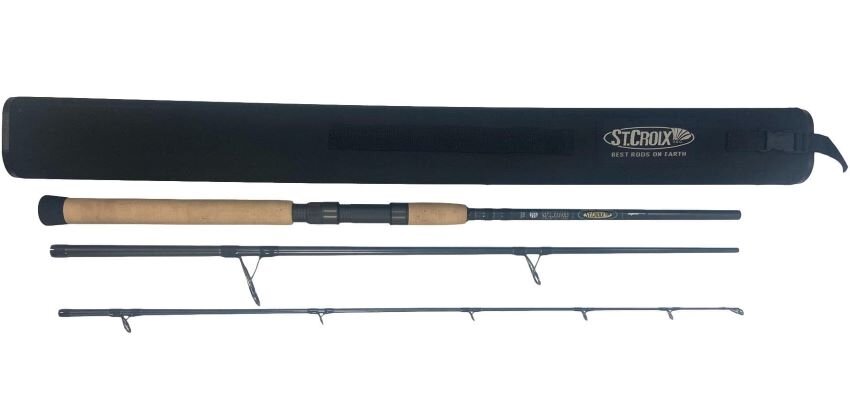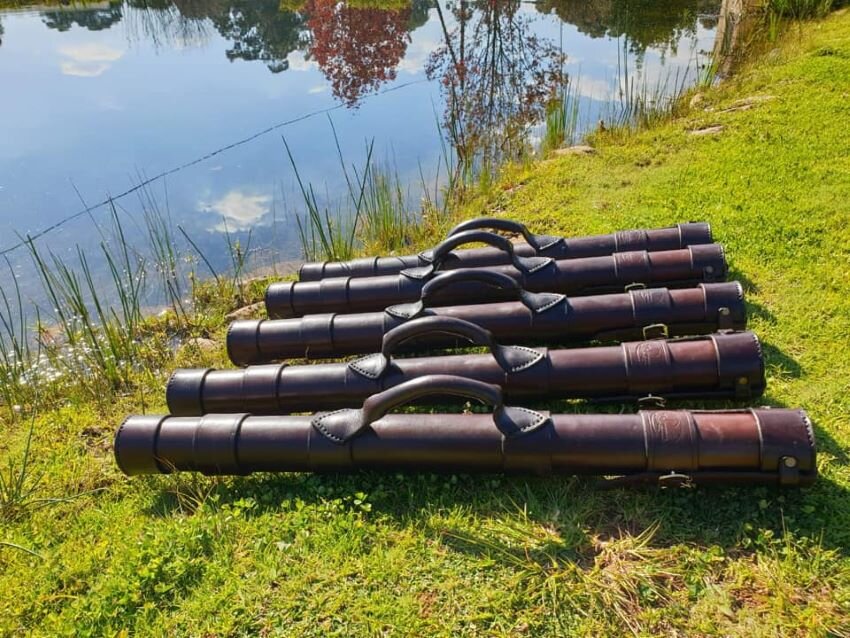St. Croix Engineers Tell the Truth about Travel Rods
Despite having investigated and researched travel rods extensively over the past few months, I was still at a loss to understand how and why some perform better than others. Clearly, there are engineering challenges to producing something other than a one-piece blank, but on the shelf or in the catalog many of them appear comparable.
Fortunately, as I pondered these questions St. Croix Rods introduced new multi-piece rods. The Wisconsin manufacturer is one of the few American companies that has shown a long term commitment to travel series at various price points, and for a wide range of situations.
My friend Jesse Simpkins at St. Croix set me up to talk to two of his engineers: Jason Brunner, Director Operations; and Gavin Falk, Engineering Supervisor. Here are their thoughts on the process of producing high-quality multi-piece rods:
HPFC: Until recently I never would have considered using anything but a one-piece rod, and I think a similar prejudice exists among most of the bass fishing community. Is that justified or overblown?
Jason Brunner
Brunner: It’s justified in the way that when you design a multi-piece rod it’s naturally going to be a little bit heavier than what you’d have in a comparable one-piece design. There’s just more materials required to give you the strength factor with ferrules being involved. I can definitely see the bass market not being willing to dive into travel rods unless they’re literally traveling somewhere where they need to break down the rod, but I think in the bass market that’s very limited.
HPFC: So who is your target market?
Brunner: Well, we’re just a bunch of engineers, but if I had to say, there’s a couple of them: It’s the guy that’s traveling from the States up to Canada, going on a fly-in trip. Whether he’s fishing for bass or walleye or musky he can’t pack in one-piece rods. It’s the same on the southern end or either one of the coasts – people traveling to the coasts from internally who are flying to those destinations.
HPFC: So when you’re building a multi-piece rod are you just taking a one-piece rod, breaking it down, and adding hardware, or are there other engineering concerns.
Brunner: There’s a lot of engineering concerns. What we’ll do, is if we have a 7-foot medium-heavy rod in a one-piece and we want to make it into a three-piece, it’s not like some people think, where we just cut it and put it together. It requires all new tooling. It requires all new pattern assembly layouts. Sometimes it requires different materials. What you’re trying to do is take that three-piece design which has ferrules in it, which through the dynamics off completely, and you’re trying to make it feel just like a one-piece rod in a comparable action.
HPFC: Between the extra weight, and – for lack of a better term – dead spots where the ferrules are – how much difference is there between a three- and a four-piece rod? I’ve seen that some manufacturers make five-, six- and seven-piece rods. Is that feasible or do you lose too much in the process?
Brunner: It’s feasible. We’ve done five-piece blanks here before. The more ferrules you have, the more creative you need to be with the design, and typically the more you have the more the design just doesn’t feel like it should. For example, if you take a 7-foot fast action rod and you go from a three-piece to a four-piece, you’re going from two to three ferrules and that third ferrule is going to have to go up in an area of the tip where you’re going to have a lot of deflection. It’s just not a desired area to have a ferrule and breakage can become a concern.
HPFC: You recently introduced new travel rods, including the Avid Trek series. What went into the design of that lineup?
Brunner: We had travel rods that we’d discontinued. They were older designs so we had to freshen them up. So not a lot changed on the blank designs. We tweaked them, made them more fluid and more consistent, but overall the componentry was probably the big thing.
Falk: We didn’t do a whole lot with the handles, compared to the Avids that currently exist. The major factor we considered was making the guide train compatible with saltwater as well because while a lot of them go up to Canada, a lot go to the saltwater, too, so we had to factor that in. We needed guides that would hold up to that. They’re Sea Guide Hero Hi-Grade guides with zirconia rings in a Gunsmoke color.
HPFC: Everyone who fished as a kid remembers the piece of junk two-piece rod that came apart on the cast or while you were fighting a fish. How important are ferrules and what do we need to do to make sure they don’t fail us at the worst possible time?
Brunner: There’s two types of ferrules. One is a spigot ferrule but that’s typically only used in the fly industry. I’ve never seen it in a casting or spinning rod – they’re just tip-over-butt ferrules. You have a male section that slides into a female section. The key there is to have the proper amount of ferrule overlap. I’ve seen travel rods where when you attach them it only goes in a ½ inch or an inch. All of our ferrules are a minimum of two inches. Over the years our engineering staff has determined that to be the best. The biggest thing is that the inside of the female section has a taper per inch, and the outside of the male section has a taper per inch and those two need to match perfectly. If they don’t you can get what we call “knocking” where when you wiggle the rod up and down you get a ticking sound or ticking feel to it. Along with that, if they’re not tapered properly they will come loose on you.
HPFC: Are there any maintenance or care requirements, or strategies for putting the rod together, to ensure that you don’t run into that knocking situation?
Brunner: Maintenance-wise, a lot of people think that they need to use ferrule wax. You really don’t. We don’t use any sort of wax on our rods. Keep them clean. If your rod is disassembled and it happens to get in some sort of solution or grease that could pick up dirt, make sure the ferrules are clean. The female portion of it, it is what it is, but with the male section make sure it’s clean. When putting it together, most people take it and line up the guides and put it together in a straight motion. We don’t recommend that. We recommend putting the male section into the female section 45 degrees from where the guides need to go, and as you push in slowly rotate it. It’s kind of a twisting motion. You’ll find that if you do that, it’ll be hard to get them apart, and to get them apart you have to do the same thing.
HPFC: What is the testing process and how many prototypes did you go through to get this rod series where you wanted it to be?
Falk: With our years of experience with blank design, we had a very good start. We might’ve only tweaked one or two patterns and then we changed the tip cuts a little bit depending on how the blanks overlapped each other – but it was pretty minimal, we didn’t have to change much.
Gavin Falk
Brunner: We built prototypes and gave them to testers. Sometimes when we do this we hit it right away. It’s just a matter of setting up them up and testing them. Typically with rods like this you’re not going to have to redo all of them, but there’s usually a tweak or two because you’re taking three individual parts and you have to put them together to make one rod. If your patterns and diameters aren’t all perfect and things don’t fit properly, that has to be fixed. You have to cut them properly. You have to have cutting instructions for them and typically it’s shop instructions that we have to redo or tweak. They have to be made the same way every time so when an angler buys one they see the same consistency over and over again.
HPFC: What sort of feedback have you gotten on the newest rods?
Falk: I’ve heard from a few of our testers that they were pleasantly surprised that it performed like a one-piece. After fishing with it for a while, they even forgot that it was a three-piece rod.
Brunner: That’s the biggest challenge, making a three-piece rod feel like a one-piece rod so that makes us feel like we hit the target when people keep on telling us that it feels like a one-piece rod.














